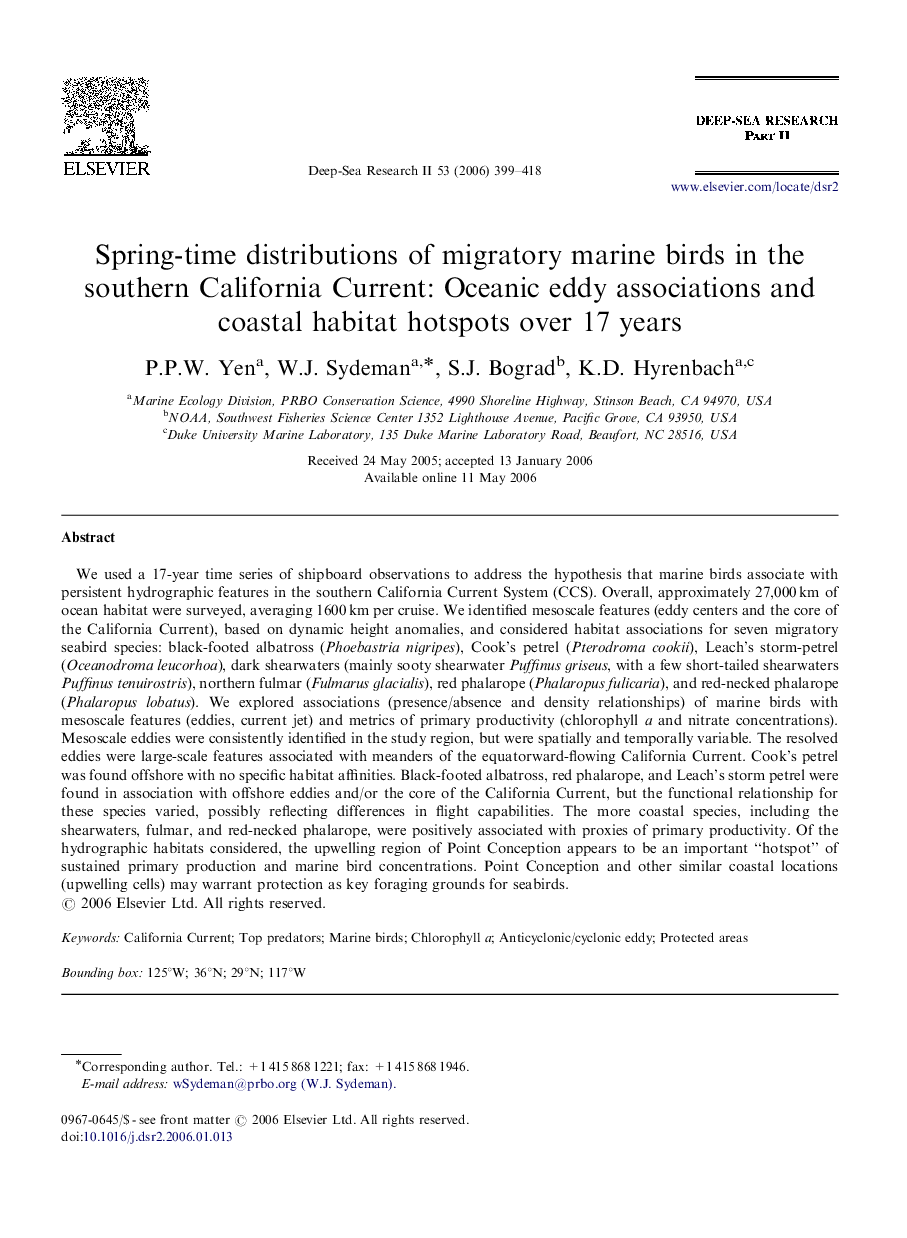| Article ID | Journal | Published Year | Pages | File Type |
|---|---|---|---|---|
| 4537880 | Deep Sea Research Part II: Topical Studies in Oceanography | 2006 | 20 Pages |
We used a 17-year time series of shipboard observations to address the hypothesis that marine birds associate with persistent hydrographic features in the southern California Current System (CCS). Overall, approximately 27,000 km of ocean habitat were surveyed, averaging 1600 km per cruise. We identified mesoscale features (eddy centers and the core of the California Current), based on dynamic height anomalies, and considered habitat associations for seven migratory seabird species: black-footed albatross (Phoebastria nigripes), Cook's petrel (Pterodroma cookii), Leach's storm-petrel (Oceanodroma leucorhoa), dark shearwaters (mainly sooty shearwater Puffinus griseus, with a few short-tailed shearwaters Puffinus tenuirostris), northern fulmar (Fulmarus glacialis), red phalarope (Phalaropus fulicaria), and red-necked phalarope (Phalaropus lobatus). We explored associations (presence/absence and density relationships) of marine birds with mesoscale features (eddies, current jet) and metrics of primary productivity (chlorophyll a and nitrate concentrations). Mesoscale eddies were consistently identified in the study region, but were spatially and temporally variable. The resolved eddies were large-scale features associated with meanders of the equatorward-flowing California Current. Cook's petrel was found offshore with no specific habitat affinities. Black-footed albatross, red phalarope, and Leach's storm petrel were found in association with offshore eddies and/or the core of the California Current, but the functional relationship for these species varied, possibly reflecting differences in flight capabilities. The more coastal species, including the shearwaters, fulmar, and red-necked phalarope, were positively associated with proxies of primary productivity. Of the hydrographic habitats considered, the upwelling region of Point Conception appears to be an important “hotspot” of sustained primary production and marine bird concentrations. Point Conception and other similar coastal locations (upwelling cells) may warrant protection as key foraging grounds for seabirds.
